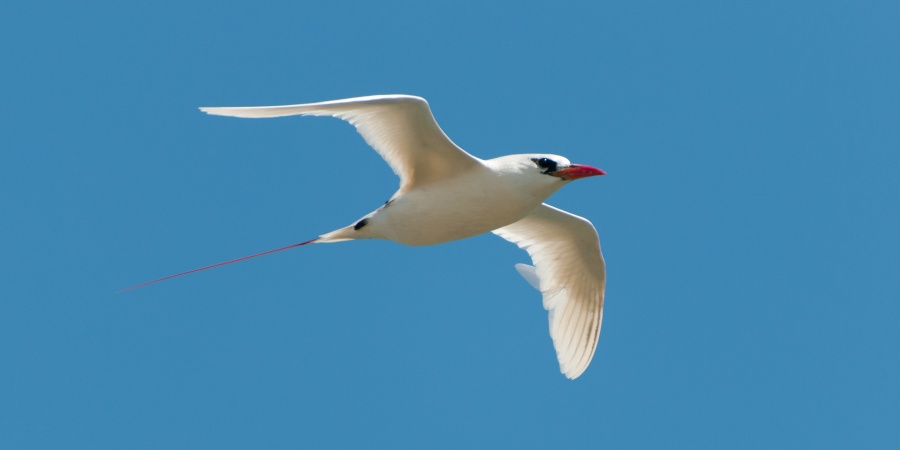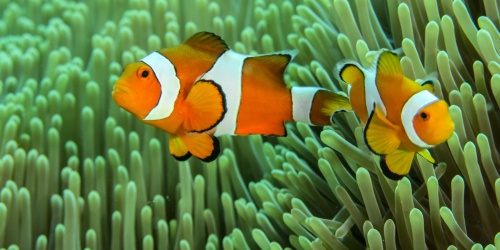
Red-Tailed tropicbird - Photo _quintin_ / Flickr
What is a red-tailed tropicbird? Adapted to spending most of its life at sea, the red-tailed tropicbird (Phaethon rubricauda) struggles to walk or stand on land. These attractive birds are rarely seen by land lovers. Returning to their nest after searching for food is often a hit-or-miss exercise, as they must land very close by. Several landing attempts are sometimes needed when the wind is unfavourable, an entertaining spectacle.
What does it look like? The large, gull-shaped body of the red-tailed tropicbird has a delicate pink hue. A bright coral-red bill, and two streamer-like red-tail feathers, give it a distinctive appearance.
Where does it live? Red-tailed tropicbirds spend most of their lives at sea and rarely venture near land. This bird is normally found in tropical and subtropical seas around northern Australia, Hawaii and other places. Though rarely seen in colder areas, a few pairs breed on Sugarloaf Rock, south of Cape Naturaliste, in Ngari Capes Marine Park.
What does it eat and how? It hunts for food well offshore, plunging into the ocean to retrieve flying fish, squid and other prey.
Behaviour: The red-tailed tropicbird indulges in an aerial courtship ritual before nesting. Such displays are performed by one to six birds, but usually in pairs. The birds remain almost stationary and swing their tail streamers from side to side as they cackle to one another.
Breeding and caring for young: Nests are usually little more than a scrape on the ground, sometimes ornamented with a broken shell or two. A small sand cay at Bedwell Island, within Clerke Reef in Rowley Shoals Marine Park, is one of very few breeding areas in Western Australia.
Protecting the red-tailed tropicbird: These land-shy birds are highly susceptible to disturbance. If you encounter red-tailed tropicbirds breeding on offshore islands, please keep your distance and avoid the nesting area.



























